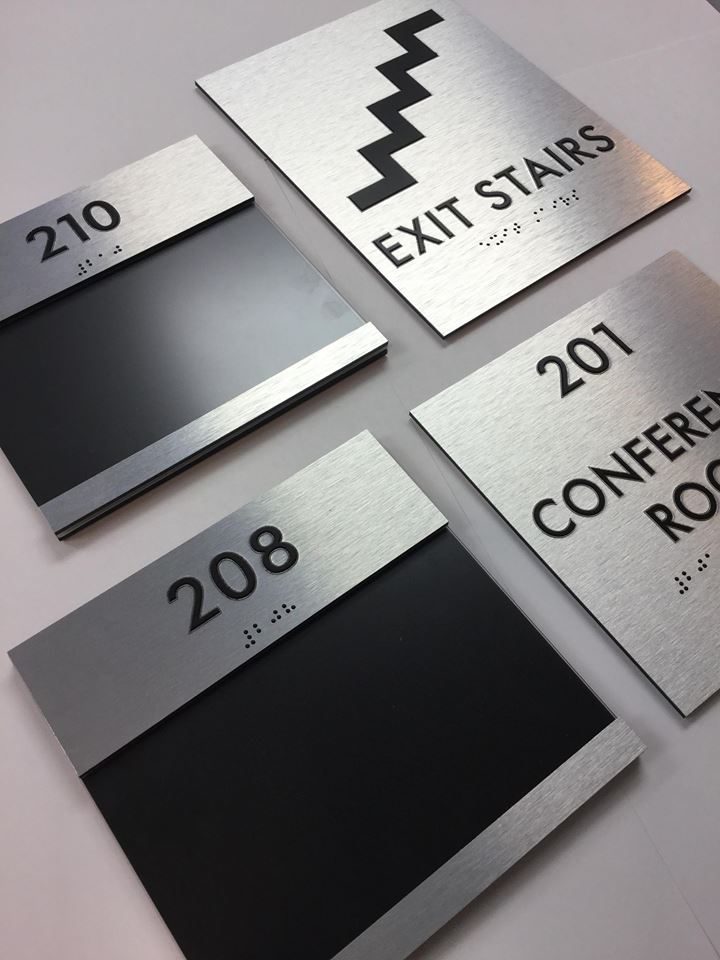How ADA Signs Enhance Ease Of Access for Everyone
How ADA Signs Enhance Ease Of Access for Everyone
Blog Article
ADA Signage: Making Sure Access and Conformity in Public Spaces
ADA signage plays a vital function in ensuring availability and compliance within public rooms, significantly contributing to a comprehensive setting for people with handicaps. As we explore the nuances of ADA signage, from tactile functions to develop ins and outs, it's critical to consider how these aspects integrate to promote the civil liberties of all customers.
Importance of ADA Signs
In modern-day culture, the importance of ADA signage extends beyond plain conformity with lawful mandates to symbolize a commitment to inclusivity and ease of access for all people. These signs are vital in producing environments where individuals with disabilities can browse public rooms with the exact same simplicity and independence as those without specials needs. By supplying standardized and clear information, ADA signs makes sure that everybody can access centers, services, and info without barriers.
The relevance of ADA signs depends on its ability to enhance the quality of life for individuals with specials needs by promoting equivalent gain access to. It eliminates the obstacles that might or else hinder their capacity to take part fully in area life. In addition, these indications work as noticeable signs of a company's commitment to diversity and equal rights, showing broader social values that promote the rights and self-respect of all individuals.
Additionally, ADA signage plays a vital duty in public safety and security. By directing people to exits, bathrooms, and various other vital centers, it ensures that all individuals, despite physical capability, can leave securely during emergencies. In summary, ADA signage is not simply a regulatory demand yet an effective tool for fostering a equitable and inclusive society.
Crucial Element of Compliance

Positioning is essential; indicators must be installed in locations that are obtainable and easily noticeable. Typically, signage should be mounted in between 48 and 60 inches from the ground to make certain ease of access for both standing and wheelchair users. Tactile components, such as Braille, are essential for people with aesthetic problems, giving critical details in a non-visual layout.
High-contrast shades between the text and history are needed to boost readability for individuals with low vision. The ADA mandates details comparison ratios to guarantee clarity. Furthermore, character dimension is a crucial consideration, with minimum elevation demands determined by the seeing distance to make certain readability from numerous angles.
Style Considerations for Access
Creating available signs needs a precise strategy to ensure it satisfies the demands of all users, especially those with handicaps. The size of the message is similarly essential, with ADA guidelines suggesting a minimal elevation based on seeing range to ensure clarity.
Contrasting colors between text and history are necessary for visibility, specifically for individuals with aesthetic problems. Furthermore, responsive aspects, such as Braille and increased characters, are vital for individuals who are blind or have low vision.
Furthermore, the positioning of signs plays a substantial function in availability. Indicators must be mounted in locations that are conveniently obtainable and unhampered. Making certain that signs is installed at suitable heights and angles enables all customers, consisting of those using wheelchairs, to connect with them properly.
Typical Errors to Avoid

An additional prevalent mistake is the incorrect positioning of signage. ADA standards specify precise elevation and location demands to ensure that indicators are easily noticeable and reachable by all individuals, consisting of those using wheelchairs. Disregarding these standards not only obstructs ease of access yet also takes the chance of non-compliance with legal requirements.
Furthermore, inadequate comparison between message and background is a regular oversight. Appropriate comparison is essential for readability, specifically for individuals with low vision. Developers occasionally pick shades that are visually appealing however do not have the necessary comparison, providing the text difficult to recognize.
Finally, some developers fail to integrate responsive elements, such as Braille, which are important for people who are blind. Omitting these attributes not only causes non-compliance with ADA guidelines but likewise restricts gain access to for a sector of the population that counts on tactile info.
Future Trends in Signage
Developments in modern technology and that site increasing awareness of inclusivity are shaping the future trends in signage style. As culture ends up being extra aware of varied demands, the assimilation of smart innovations into signage is acquiring traction. Digital signage, for instance, is developing to include real-time updates and interactive features, which can be essential in offering dynamic information in public spaces. These indicators often integrate touch displays or gesture-based controls, enabling users to browse material customized to their particular demands.
One more emerging pattern is the usage of increased truth (AR) to boost individual experience. AR-enabled signage can overlay electronic info onto the physical environment, giving visually damaged people with auditory or haptic comments. ADA Signs. This technology not only boosts accessibility yet likewise creates an appealing experience he said for all users
Sustainability is likewise a significant variable influencing signs trends. Green materials and energy-efficient illumination solutions are being prioritized to line up with worldwide environmental objectives. Moreover, improvements in products science are causing the growth of even more weather-resistant and sturdy signs.
Final Thought
ADA signs plays an essential role in guaranteeing availability and conformity within public rooms by including tactile aspects, high-contrast colors, and calculated positioning. The adherence to ADA criteria not just promotes risk-free navigation for people with disabilities but also represents an organization's commitment to diversity and inclusivity. By preventing typical blunders and welcoming future fads, public rooms can proceed to progress these worths, making sure that the legal rights and self-respect of all individuals are appreciated and maintained.
ADA signs plays a crucial duty in assuring access and conformity within public areas, considerably contributing to an inclusive environment for people with look at here handicaps. As we discover the nuances of ADA signage, from responsive functions to create details, it's critical to take into consideration exactly how these elements integrate to promote the legal rights of all users.In modern society, the importance of ADA signs prolongs beyond plain conformity with legal requireds to symbolize a commitment to inclusivity and ease of access for all individuals. By giving clear and standardized details, ADA signage makes certain that everybody can access facilities, services, and details without obstacles.
ADA signs plays a crucial function in guaranteeing accessibility and conformity within public areas by including tactile elements, high-contrast shades, and strategic positioning. (ADA Signs)
Report this page